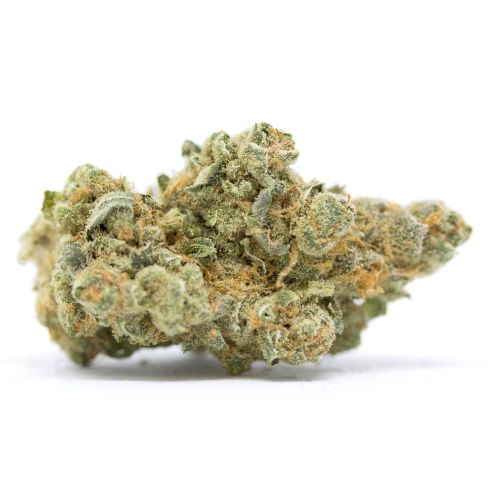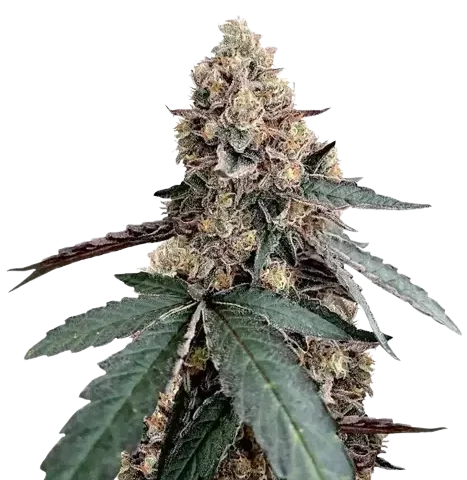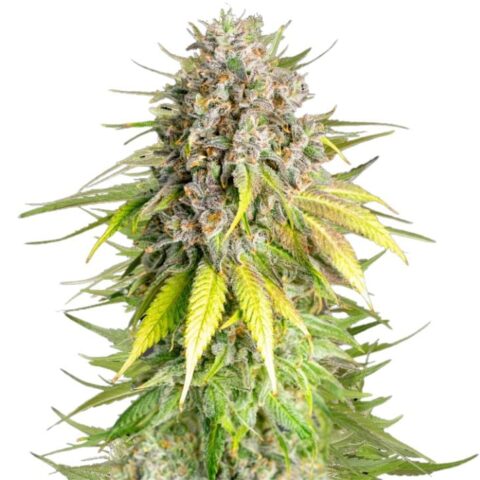Description
Introduction:
Clementine Cannabis Seeds, a unique and increasingly popular strain in the kif cultivation community, offer a compelling blend of genetics, aroma, and effects, making them a top choice for both novice and experienced growers. Originating from a carefully selected cross between Tangie and Lemon Skunk, these seeds embody a rich heritage that combines the best characteristics of both parent strains. The Tangie lineage brings a refreshing and potent citrus aroma, while the Lemon Skunk genetics contribute to the plant’s robust growth and resilience, making it a suitable choice for various growing conditions.
Clementine stands out for its distinctive terpene profile, which is heavily influenced by limonene, a terpene known for its mood-elevating and stress-relieving properties. This profile lends the strain a sweet, tangy aroma reminiscent of freshly peeled oranges and lemons, which is particularly appealing to those seeking a flavorful smoking experience.
Furthermore, the Clementine strain is renowned for its relatively elevated THC levels, typically falling within the 18-22% range. This results in a potent and invigorating high that combines a cerebral experience with increased energy. Consequently, it serves as an exceptional option for daytime consumption, particularly for those seeking heightened creativity, improved focus, or a delightful respite from stress.
Its effects are often described as euphoric and uplifting, without the overwhelming sedation that comes with some high-THC strains, allowing users to maintain a sense of clarity and engagement with their surroundings. Cultivation-wise, Clementine seeds are recognized for their versatility and adaptability. They thrive in both indoor and outdoor environments, showing resilience to common pests and diseases
. This strain typically flowers within 8-9 weeks when grown indoors, and by late September to early October in outdoor settings, depending on the climate. In terms of appearance, Clementine plants are visually striking, featuring bright green leaves and densely packed buds that are coated in a thick layer of crystalline trichomes, indicative of their potency. The buds also often exhibit vibrant orange pistils, adding to the visual appeal and reflecting the strain’s citrus lineage.
When it comes to yield, Clementine is a generous producer, offering bountiful harvests that further enhance its popularity among growers. In conclusion, Clementine Cannabis Seeds represent a harmonious blend of aroma, flavor, effects, and growing traits. They offer a delightful and versatile option for both recreational and medical kif users, embodying a unique combination of genetics that ensures a high-quality and enjoyable experience for growers and consumers alike.
Origin and Lineage:
Clementine Cannabis Seeds boast a captivating origin and lineage, rooted in a rich tapestry of kif genetics that highlights the art and science of strain breeding. This strain, a hybrid marvel, is the progeny of two esteemed parent strains: Tangie and Lemon Skunk, each bringing its unique genetic signature to the mix. Tangie, itself a modern reinterpretation of the classic Tangerine Dream, is renowned for its exceptionally potent citrus aroma and sativa-dominant effects, making it a favorite among those seeking an uplifting and energizing experience.
Its lineage can be traced back to the venerable Skunk lineage, which has been a cornerstone in the kif breeding world for decades, known for its robust growth characteristics and distinctive aroma. On the other side, Lemon Skunk, with its skunky, lemony profile, is a testament to the careful selection and breeding of Skunk varieties. Originating from two distinct Skunk phenotypes that exhibited exceptionally zesty lemon traits, Lemon Skunk adds depth and complexity to the Clementine lineage, contributing to its resilience and adaptability in various growing conditions.
The union of these two strains in Clementine has resulted in a harmonious blend that harnesses the invigorating citrus aroma of Tangie with the sturdy and reliable growth traits of Lemon Skunk. The resulting Clementine strain serves as a testament to the potential of contemporary kif breeding, presenting a strong genetic profile that caters to a broad spectrum of tastes and preferences.
The focus on combining these specific traits was likely driven by a desire to create a strain that was not only enjoyable in its effects and flavor profile but also accessible and manageable for growers of all levels. This thoughtful approach to strain development is evident in Clementine’s ease of cultivation and its ability to thrive in diverse environments, whether in controlled indoor setups or in the unpredictability of outdoor gardens.
Furthermore, Clementine’s lineage speaks to a broader trend in the kif industry towards the development of strains that offer a complex and nuanced experience. The emphasis on a rich terpene profile, exemplified by the strain’s distinct citrus aroma, reflects a growing appreciation among consumers and breeders for the subtleties of flavor and aroma in kif.
This appreciation goes beyond mere THC content, delving into the intricate interplay of cannabinoids and terpenes that define a strain’s character. In summary, the origin and lineage of Clementine Cannabis Seeds showcase a deliberate and artful convergence of genetics, designed to create a strain that is as enjoyable as it is robust, embodying the evolving sophistication of kif breeding and the endless pursuit of perfection in the art of strain development.
Growth Difficulty and Grow Guide:
Clementine Cannabis Seeds are celebrated for their moderate growth difficulty, making them a viable option for both novice and experienced cultivators. This unique strain, with its heritage rooted in the robust genetics of Tangie and Lemon Skunk, exhibits a resilient and adaptable nature that simplifies the cultivation process.
Typically, Clementine plants thrive in a range of environments, both indoors and outdoors, displaying a strong resistance to common pests and diseases. This resilience is a boon for beginners, reducing the complexities associated with managing plant health. In terms of growth characteristics, Clementine plants exhibit a medium height, making them manageable in space-restricted indoor setups. They respond well to training techniques like topping and low-stress training (LST), which can be used to maximize yield and manage plant structure.
The flowering period for Clementine is approximately 8-9 weeks when grown indoors, which is relatively quick and allows for efficient turnover for growers. This strain prefers a mild to warm climate with ample sunlight, typical of Mediterranean-like conditions. It’s important for growers to maintain optimal humidity and temperature levels, particularly during the flowering phase, to ensure the development of dense, resinous buds. Adequate nutrient management, particularly during the vegetative and flowering stages, is crucial to maximize the strain’s potential.
Clementine’s responsiveness to nutrients allows for robust growth and a generous yield, with buds characterized by a thick layer of trichomes and vibrant orange pistils. Overall, Clementine Cannabis Seeds present a gratifying cultivation experience, with their manageable growth difficulty and rewarding yields, making them a favored choice for a diverse range of growers seeking a balance between ease of growth and quality of produce.
Nutrients and Equipment:
- Seed Germination: Clementine seeds tend to achieve the best germination results when employing the paper towel method. This method involves sandwiching the seeds between damp paper towels and maintaining a warm environment to promote sprouting.
- Growing Medium: A well-draining soil mix or a soilless medium like coco coir works effectively for Clementine, providing adequate aeration and moisture retention.
- Equipment: Essential equipment includes pots or grow beds, a pH meter, a hygrometer, and proper ventilation systems to maintain optimal growing conditions.
- Lighting: Clementine thrives under full-spectrum LED lights, which offer a balance of cool and warm light, crucial for healthy vegetative growth and flowering.
- Nutrients: An ideal nutrient regimen for Clementine involves a balanced approach, with higher nitrogen content during the vegetative phase and increased phosphorus and potassium levels during flowering.
- Temperature: Maintaining a consistent temperature range between 68-80°F (20-27°C) ensures healthy growth and development of Clementine plants.
- Humidity: Relative humidity levels should be around 40-50% during flowering, with lower levels to prevent mold and higher levels during vegetative growth.
- Pruning: Regular pruning, especially during the vegetative stage, can help manage plant size and promote better air circulation and light penetration.
Flowering Phase:
- Lighting: Intense light, particularly during the flowering stage, with around 18-20 hours of light per day during vegetation, promotes vigorous growth in Clementine plants.
- Nutrients: Clementine benefits from micronutrients like magnesium and calcium, in addition to the primary NPK (nitrogen, phosphorus, potassium) nutrients.
- Temperature: Slightly cooler nighttime temperatures can help enhance the color and resin production in Clementine buds.
- Humidity: Gradually decreasing humidity during the flowering stage helps in the development of dense, resin-rich buds in Clementine plants.
- Sexing: It’s important to identify and separate male plants early to prevent pollination, as Clementine is typically grown from non-feminized seeds.
Harvest:
- Indicators: Harvest readiness in Clementine is indicated by the darkening of pistils and the cloudiness of trichomes when observed under a magnifier.
- Technique: A gentle, dry-trimming technique post-harvest helps preserve the delicate trichomes and aroma of Clementine buds.
- Curing: Proper curing of Clementine involves storing dried buds in airtight containers, opening them periodically to allow for air exchange and even curing.
Common Challenges:
- Pests: Regularly inspecting Clementine plants for signs of pests like spider mites and aphids is crucial for maintaining plant health.
- Nutrient Imbalance: Yellowing leaves or burnt tips can indicate nutrient imbalances, requiring adjustment in feeding schedules and concentrations for Clementine.
- Over/Under Watering: Excessive watering can result in root rot, while insufficient watering can cause stress to Clementine plants. Therefore, it’s essential to adhere to a regular and consistent watering schedule.
Additional Tips:
- Training Techniques: Methods such as SCROG (Screen of Green) or SOG (Sea of Green) can be utilized to optimize light exposure and enhance the yield of Clementine plants.
- Climate: Clementine prefers a temperate climate with a balance of warm days and cooler nights, mimicking its Mediterranean genetic heritage.
- Testing: Regular testing of soil pH and nutrient levels helps in fine-tuning the growing conditions for optimal growth of Clementine.
Germination time:




